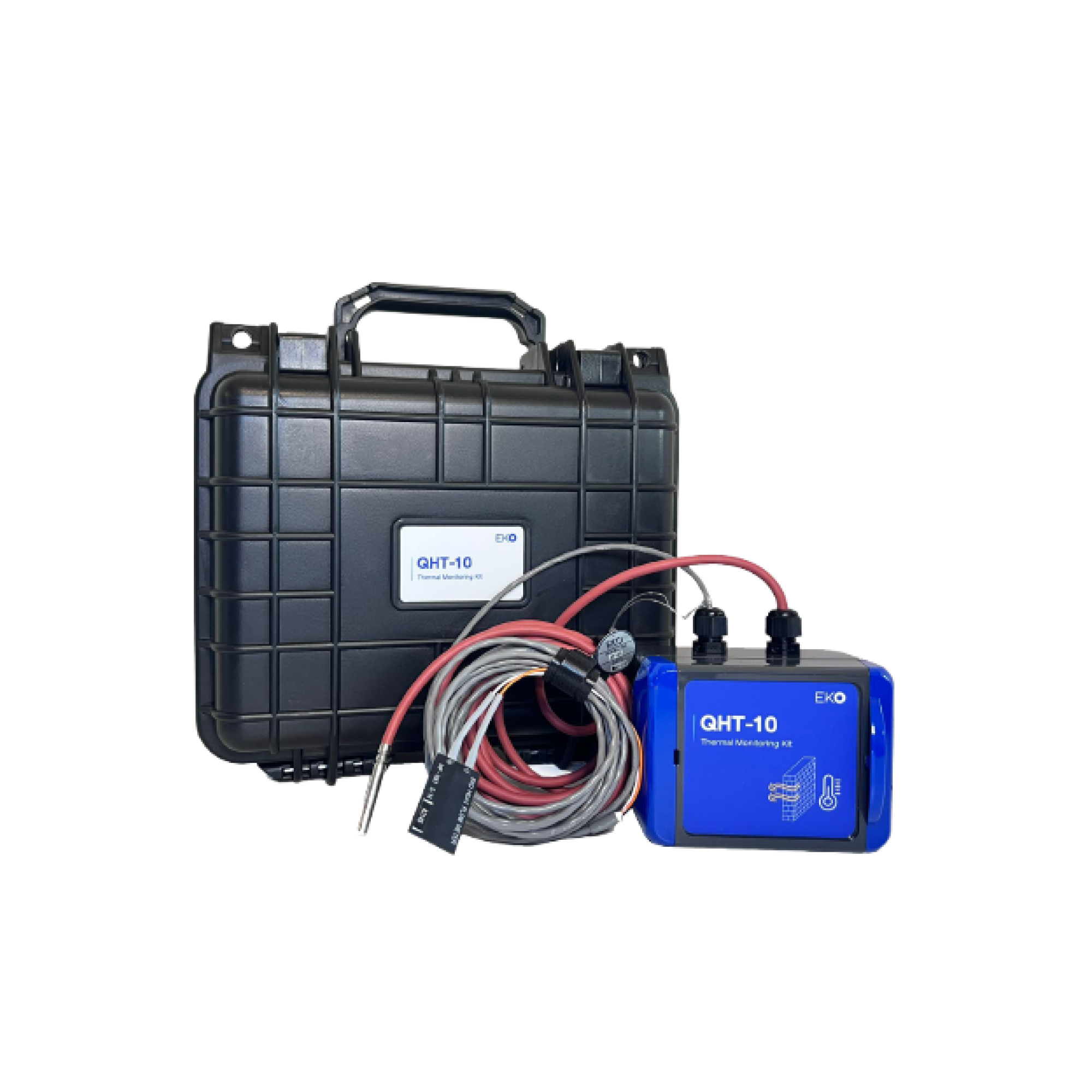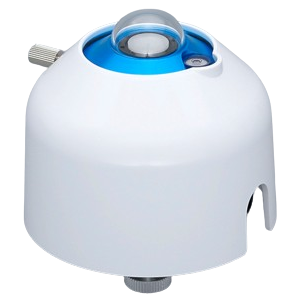Menu
Menu

The QHT-10 Thermal Monitoring Kit is a flexible heat flux and temperature monitoring solution, an ideal option for research and engineering applications as well as manufacturing control and monitoring processes.
Easy to set up and use, the QHT-10 comes housed in a weather-resistant case and is equipped with a long-life battery and an ultra-high-resolution data logger that can store up to 4 million data points.
Including thin and sensitive EKO MF-180 Heat Flux Sensors and highly accurate 4-wire RTD Temperature Sensors, the QHT-10 comes in three configurations; the dual ‘Heat Flux’ model ‘HH’, the dual temperature model ‘TT’ and the mixed model ‘HT’.
Key Features:
| Number of measurement points | 2 |
|---|---|
| Logger Operating temperature range | -40 to +90°C |
| Data storage | 4 Million Data points |
| Datalogger battery life | Interval: >1min : 4 years – 10s : 230 days |
| Battery type of the data logger | Lithium type SL-750/S |
| Interface | USB to PC |
| Software | InfraLog 5 |
| Measurement unit IP level | IP66, IP68 |
| Transport case IP level | IP67 |
| Weight (Measurement unit) | 0.335 kg |
| Weight (incl Transport case) | 1.55 kg |
| Dimensions (Measurement Unit) | 113 x 80 x 60 mm |
| Dimensions (Transport case) | 270 x 240 x 120 mm |
| Sensor specifications : | |
| Heat flux sensor type | EKO MF-180 (Models HH and HT) |
| Heat flux sensor nominal sensitivity | Approx. 28 μV/W/m² |
| Heat flux range | ±1500 W/m² |
| Heat flux sensor temperature range | -30 to 120°C |
| Temperature Sensor type | PT-1000, 4-wire (Models HT and TT) |
| Temperature sensor accuracy | 1/10 DIN class |
| Temperature Sensor Range | -60 to 180°C |
| Sensor Cable Length | 3 m |
Contrary to popular belief, Lorem Ipsum is not simply random text. It has roots in a piece of classical Latin literature from 45 BC, making it over 2000 years old. Richard McClintock, a Latin professor at Hampden-Sydney College in Virginia, looked up one of the more obscure Latin words, consectetur, from a Lorem Ipsum passage, and going through the cites of the word in classical literature, discovered the undoubtable source. Lorem Ipsum comes from sections 1.10.32 and 1.10.33 of “de Finibus Bonorum et Malorum” (The Extremes of Good and Evil) by Cicero, written in 45 BC. This book is a treatise on the theory of ethics, very popular during the Renaissance. The first line of Lorem Ipsum, “Lorem ipsum dolor sit amet..”, comes from a line in section 1.10.32.
The standard chunk of Lorem Ipsum used since the 1500s is reproduced below for those interested. Sections 1.10.32 and 1.10.33 from “de Finibus Bonorum et Malorum” by Cicero are also reproduced in their exact original form, accompanied by English versions from the 1914 translation by H. Rackham.




